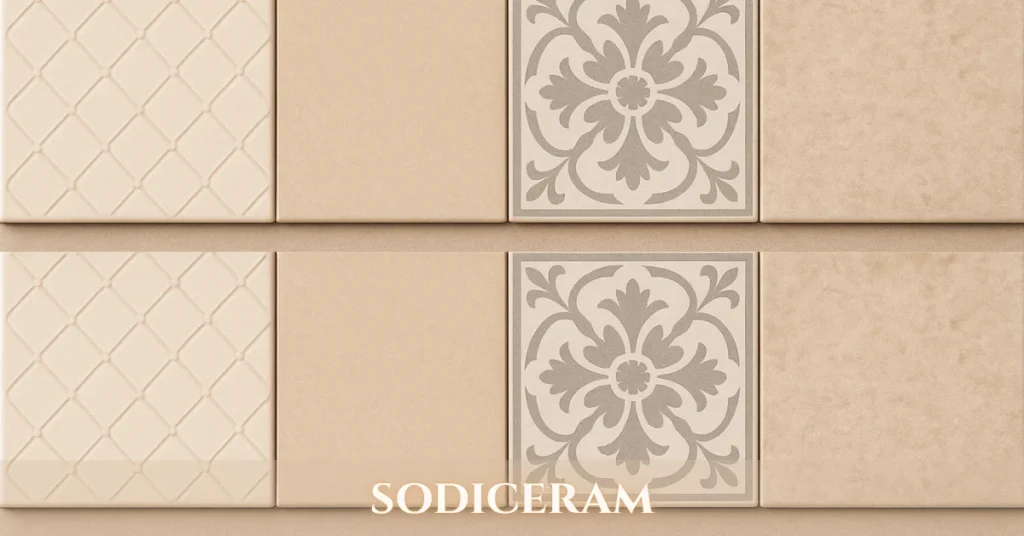In the world of fine ceramics and sanitary ware, few names echo with as much nostalgia and respect as Sodiceram. Though the brand may not line modern store shelves anymore, its legacy continues to influence both design enthusiasts and professional restorers. But what made Sodiceram so iconic in the French market? Let’s take a deep dive into the rise, fall, and lasting influence of this classic name in French craftsmanship.
The Origin of Sodiceram
Sodiceram began as a small but ambitious ceramic manufacturer rooted in France’s proud artisanal heritage. Born during a time when functional design began to merge with aesthetic innovation, Sodiceram quickly found a niche in quality bathroom fixtures and tiles that embodied both reliability and elegance.
Sodiceram’s Place in French History
By the mid-20th century, Sodiceram had cemented itself as a trusted name in homes, hotels, and architectural developments throughout France. Whether it was sleek ceramic sinks or decorative wall tiles, their products exuded a level of craftsmanship that aligned with the sophistication of French interior trends.
Why Sodiceram Still Matters Today
Even though the company is no longer active, its legacy endures. Interior designers, homeowners renovating older properties, and collectors still seek out Sodiceram pieces for their authenticity, quality, and design.
The Rise of Sodiceram
Founding Philosophy and Vision
At its core, Sodiceram aimed to marry functionality with aesthetic appeal. This wasn’t just about making tiles and toilets — it was about elevating everyday items into elements of style.
Craftsmanship Meets Innovation
With a team of skilled ceramicists and engineers, the company continually pushed boundaries, blending traditional techniques with modern manufacturing.
Core Products and Specializations
Ceramic Tiles
Sodiceram tiles were known for their rich textures, vibrant glazes, and geometric harmony. Popular in kitchens and bathrooms alike, they were both decorative and functional.
Sanitary Ware
The company’s range of sinks, toilets, and bidets brought a touch of class to even the most utilitarian corners of the home.
Expansion Across France
As demand grew, Sodiceram expanded with showrooms and distribution networks across France.
Regional Distribution & Showrooms
From Paris to Marseille, their showrooms became a go-to destination for both contractors and private buyers.
Design and Aesthetic Influence
French Elegance in Every Piece
Sodiceram products often showcased soft curves, minimalist lines, and natural color palettes—hallmarks of French design. Their attention to visual harmony elevated them above mere utility.
Collaborations With Designers
Sodicerams didn’t shy away from working with contemporary artists and architects to push the creative envelope.
A Union of Art and Functionality
These collaborations produced unique limited-edition runs that are now prized by collectors.
Influence on Modern Ceramic Trends
From matte finishes to subtle floral patterns, today’s ceramic design owes more to Sodicerams than most realize.
Quality and Craftsmanship
Materials That Made the Difference
Using high-grade clay and custom glazes, Sodiceram’s materials were carefully selected to ensure both beauty and durability.
In-House Manufacturing Process
With a commitment to maintaining control over the entire production process, Sodicerams ensured consistent quality.
Reputation for Durability and Style
Sodiceram pieces were known to last decades, with many vintage pieces still intact and functioning today—a true testament to their quality.
Challenges and Decline
Market Shifts and Global Competition
With the globalization of manufacturing in the late 20th century, cheaper imports began flooding the market, making it difficult for French manufacturers like Sodicerams to compete.
Internal Restructuring and Closure
Faced with declining margins and shifting demand, the company attempted restructuring but eventually shut down operations.
The Legacy It Left Behind
Even in closure, the name Sodicerams continues to hold value. Vintage enthusiasts, architects restoring heritage buildings, and online marketplaces still celebrate its name.
Sodiceram’s Legacy Today
Collectors and Vintage Seekers
Sodicerams tiles and fixtures are often found in antique shops and online platforms like eBay and Etsy. These items are not just collectibles — they’re pieces of design history.
Influence on Current Brands
Modern ceramic brands often mimic Sodiceram’s aesthetic — proof that true design never really goes out of style.
Restoration and Architectural Preservation
Many French restorers rely on Sodicerams pieces for authentic period restorations, especially in mid-century homes and classic Parisian apartments.
Conclusion
Sodiceram may no longer be in production, but its legacy in French ceramics and sanitary ware is undeniably enduring. From elegant tiles to functional yet beautiful fixtures, the brand represented a golden age of home design—one where quality, beauty, and purpose blended seamlessly. Its story is not just about a company, but about a time when even the simplest household items were crafted with intention and artistry.
YOU MUST READ: www.faqvehicle .com: Your Go-To Hub for Car Questions & Tips
FAQs
What products did Sodiceram specialize in?
Sodiceram was known for high-quality ceramic tiles, bathroom sinks, toilets, bidets, and other sanitary ware.
Is Sodiceram still in business?
No, Sodiceram is no longer an active brand, but its vintage products are still in demand.
Where can I find vintage Sodicerams pieces?
You can find them in antique stores, architectural salvage yards, or online marketplaces like eBay and Etsy.
What makes Sodicerams unique in the ceramic industry?
Its blend of French design elegance, durable craftsmanship, and artistic innovation set it apart.
Did Sodicerams export internationally?
While primarily popular in France, Sodicerams had some international presence, particularly in high-end architectural projects.






